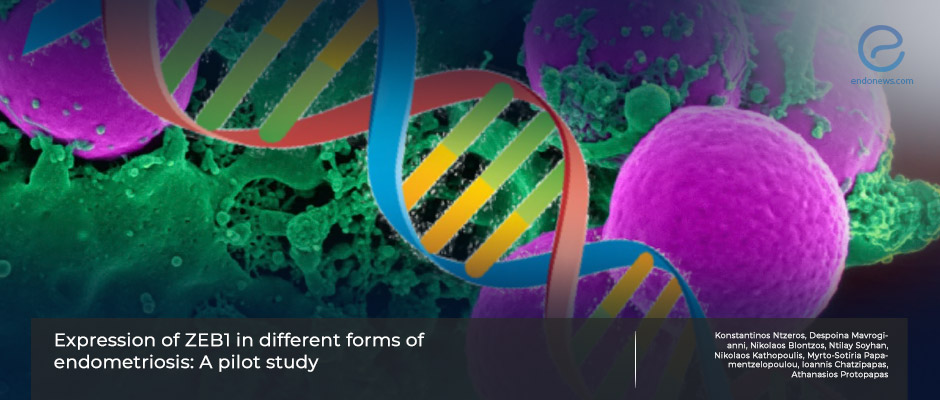Does ZEB1 Gene Expression Govern Endometriosis Infiltration Pattern?
Aug 24, 2023
ZEB 1 gene expression may play a role in the infiltration pattern of different types of endometriosis lesions.
Key Points
Highlights:
- ZEB1 expression differs between different types of endometriosis.
Importance:
- ZEB1 could play a role in whether or not infiltrating endometriosis lesions will develop, shedding light on the molecular mechanisms of lesion development.
What’s done here:
- Researchers analyzed women with endometriosis including those with DIE and women with benign gynecological lesions without endometriosis.
- A total of 19 patients with endometriosis (9 with endometriotic cysts but no DIE; 10 endometriotic cysts with DIE), and 8 with benign gynecological lesions but no endometriosis.
Key results:
- It is not clear whether the ZEB1 expression levels in the eutopic endometrium could affect the development of infiltrating lesions.
- Interestingly, there were different ZEB1 profiles of cyst walls from "endometriomas" in women with and without DIE.
- No statistical difference was detected in terms of ZEB1 expression between eutopic endometrium and their paired endometrioma cyst walls.
- ZEB1 was underexpressed in the eutopic endometrium of women with endometriotic cysts, compared to the endometria of controls.
- However, ZEB1 expression was not different in the eutopic endometrium of women with DIE, compared to the endometrium of controls.
- ZEB1 was significantly overexpressed in the eutopic endometrium of women with DIE, compared to the endometria of women with endometriotic cysts only.
Limitations:
- The number of women that have been analyzed is very small (19), which is a major limitation.
Lay Summary
The expression of a gene called ZEB1 is different between different types of endometriosis, found a new study published in the European Journal of Obstetrics & Gynecology and Reproductive Biology. This could affect whether or not lesions become infiltrative.
More importantly, even though women with or without deep infiltrating endometriosis (DIE) have the same histologic characteristics, the difference in ZEB1 gene expression suggests that the pathogenetic mechanisms at play may be different in women with and without DIE.
ZEB1 is a crucial gene for epithelial-mesenchymal transition, a cellular process where epithelial cells lose their epithelial characteristics and acquire mesenchymal features. Researchers think that this process is central to the migration and invasion of endometriotic cells as well.
To further analyze the possible role of the ZEB1 gene in endometriosis, a team of researchers from Greece compared the expression levels of this gene in different types of endometriosis lesions. They analyzed a total of 19 patients with endometriosis and 8 with benign gynecological lesions other than endometriosis. Of those with endometriosis, 9 had endometriotic cysts without DIE, while 10 had DIE and developed concurrent endometriotic cysts.
The researchers found that the expression levels of ZEB1 were lower in the endometrium of women with endometriotic cysts compared to the endometrium of the control group. When they compared the endometriotic cyst wall and their corresponding paired eutopic endometrium from the same patient, there was a trend toward higher ZEB1 expression in the cyst walls. However, the difference was not significant.
There was no significant difference in terms of ZEB1 between the eutopic endometrium of women with DIE and the endometrium from the control group. There was also no significant difference between the endometriomas and DIE lesions of the same patient, in terms of ZEB1 expression.
However, the expression profile of ZEB1 was different in the endometriotic cysts of women with and without DIE when the cyst wall was compared to their paired eutopic endometrium.
“ (…) future research on endometriosis should consider DIE and ovarian endometriosis as different diseases,” the researchers concluded.
Research Source: https://pubmed.ncbi.nlm.nih.gov/37245357/
deep infiltrating endometriosis gene expression invasion

